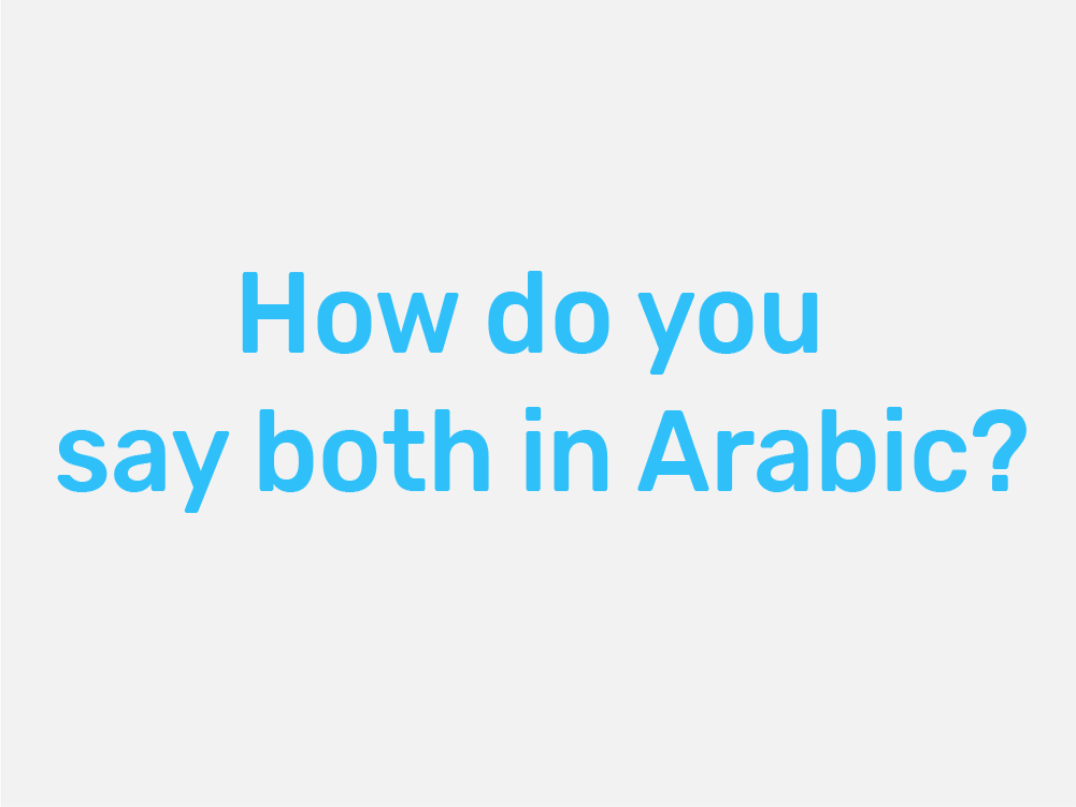How Do You Say “Both” In Arabic?


There are many ways to say the same thing in Arabic. One of them is to say both of them in Arabic. No, this is not a grammatical error. We literally mean both of them in Arabic. So, let’s find out how to express both in Arabic!
The immediate translation and meaning of “both” in Arabic depends on a number of factors including what it is referring to and context.
Before you freak out, allow us to explain. “Kela كلا” is used for masculine nouns meanwhile “Kelta كلتا” is used for feminine nouns. They must be dual and definite nouns. For example, the phrase “both men” is translated to “كلا الرجلين”, and the phrase “both women” is translated to “كلتا المرأتين”. That was simple right? This leaves us with “Kelahoma كلاهما”. As we all know, pronouns substitute nouns when they are out having a break from being in every single sentence. When a pronoun pops in, we use “Kelahoma كلاهما”. For example, “Both men played Chess, and they were smart.” The underlined word is referring to both men and is translated like this “كلا الرجلين يلعبون الشطرنج و كلاهما أذكياء”.
Now that we have the first one off of our shoulders, let’s move on to the next “both in Arabic”.
Just like the English language, some phrases are used just to give a diversity of ways to say the same thing. There is no specific rule in using “Ala Had Sewa’ على حد سواء”. It’s an alternative for Kela, Kelta or Kelahoma and can be used comfortably in that way. “Both” is not the only meaning of “Ala Had Sewa’ على حد سواء”. It also means “equally”, “likewise”, “in like manner”, “alike” and “as well as”. What a collection huh? It gets really cool down here with “Ala Had Sewa’ على حد سواء”. Let’s take a look at these two examples. The sentence “Uranus and Neptune appear very much alike” translates into “أورانوس و نبتون يبدوان كثيرا على حد سواء”. Meanwhile, in some parallel universe, the sentence “The changes have been both deep and broad” has been translated into “كانت التغييرات كبيرة و شاملة على حد سواء”.
This next “both of them” in Arabic is similar to “Ala Had Sewa’” in the sense that it serves many purposes in meaning. One of them, of course, is the word “both”. However, it also does mean a number of other things including, “together”, “with each other”, and “jointly”. The sentence “We both know” translates into “نحن سويا نعلم”, while “We are working together” translates into “نحن نعمل سويا”. As you can see, the first one translates into “both” while the second into “together”.
I know I have said this before, but just like our other two friends “Ala Had Sewa” and “Sawiyan”, “Lekol” is another know-it-all. Some of its endless meanings are “per”, “for each”, “for all”, “for every”, and of course “for both”.
Trying to say both in Arabic is easy. And I think we just proved it. Here are a few choices, just take your pick.
If you liked this article and would like to start learning Arabic, why not head over to our website and download the Kaleela Arabic learning app and learn to speak Arabic today? With the Kaleela Arabic learning app you can start learning Arabic on your own, at your own pace, whenever and wherever you want. It really is the best way to learn Arabic! Try it now and find out why.